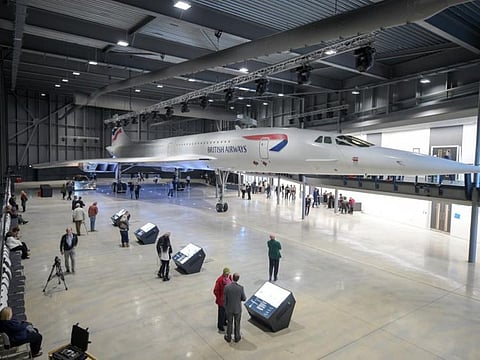So you always wanted to fly Concorde?
Now you can visit the legendary aircraft – and even take the controls

Concorde pilots were a rare species, it seems.
The museum centrepiece is the last Concorde ever built. For years, it had languished, open to the elements, on a disused runway. Now it’s a main attraction once again, reflecting Concorde’s enduring power to amaze and impress. In an age when most passenger planes look the same, on the outside at least, this supersonic jet is still so very different.
Alpha Foxtrot made its final flight in November 2003 (flying over Clifton Suspension Bridge), and is now housed in a specially constructed hangar in the museum at Filton, on the outskirts of Bristol, where the airframe and the engines of Concorde were largely developed and where the UK assembly line was located. It is one of 18 remaining Concordes (only 20 were ever built), with the rest scattered around airports and museums elsewhere in Britain, France, the US, Germany and even Barbados. They were retired from duty, largely, because of the crash of the Air France Concorde in Paris in July 2000 and the rising cost of maintenance.
While the aim of Bristol Aerospace is to showcase the remarkable role played by the site in Britain’s aviation history, it also sets out, according to the museum’s collections manager, Linda Coode, to inspire the next generation to get interested in science and engineering. It succeeds brilliantly, with numerous exhibits – such as flight simulators (a Concorde training cockpit and an Airbus A320) and interactive options (a wind tunnel where you can play with a model aircraft) broadening its appeal.
aerospacebristol.org
Sign up for the Daily Briefing
Get the latest news and updates straight to your inbox



